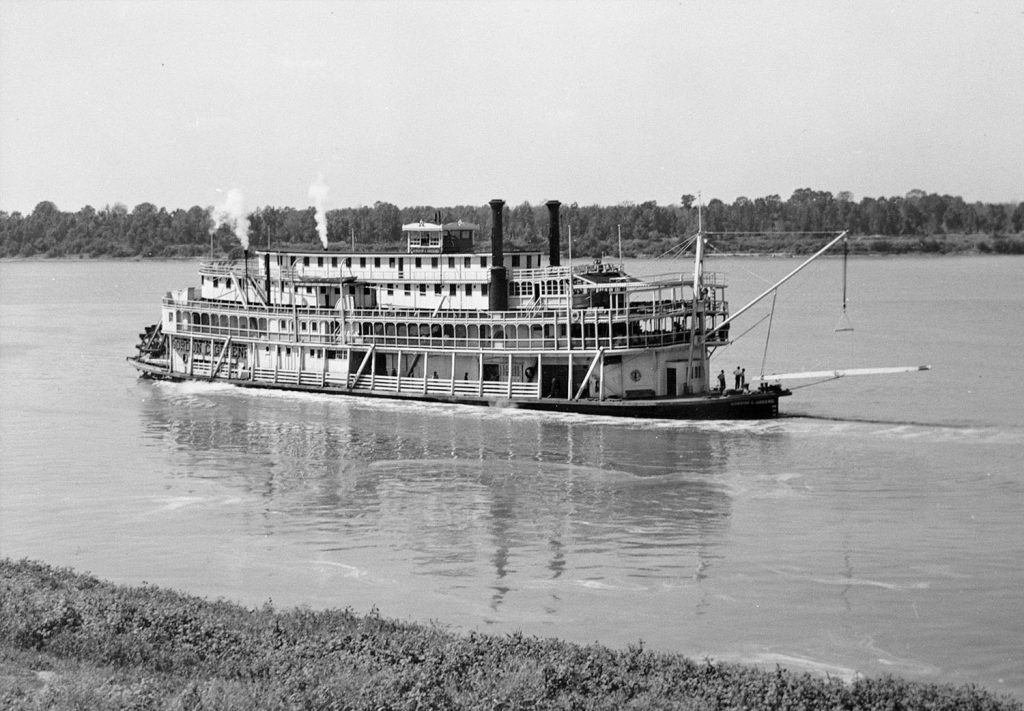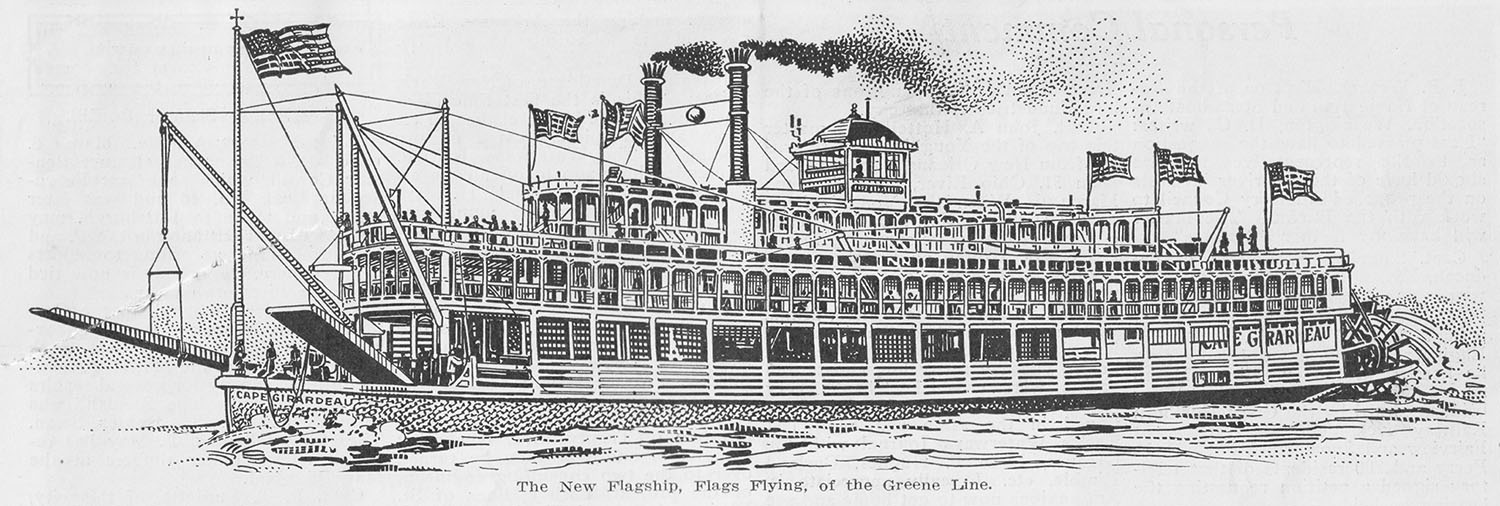While news of vessels like the Coiner, which was detailed in the last column, was common in the issues of The Waterways Journal during 1935, there were also items dealing with packets. There was one packet still based at Pittsburgh, the Liberty. The magnificent Queen City had run its last trip in 1933 and was being utilized as a wharfboat at Pittsburgh. A news story indicated that the pilothouse and texas would be torn off the boat, but the mahogany paneling from the cabin was to be saved. The Senator Cordill had sunk on an improperly lowered wicket at Ohio River Lock 14 in February 1934, yet there were still published rumors that it might be rebuilt to run again. That didn’t happen, and it was ultimately dismantled.
The river industry was changing: progress was being made with boats like the big diesel prop Herbert Hoover of the Inland Waterways Corporation, the steam prop boats of the Mississippi Valley Barge Line and the very modern diesel prop towboats Peace and Neville of the Union Barge Line. Yet packets were still news.
The big news in the pages of the WJ in 1935 seemed to concern a packet. It was announced in the March 2, 1935, issue that Greene Line Steamers of Cincinnati had purchased the packet Cape Girardeau from the Eagle Packet Company of St. Louis. This news wasn’t simply announced but trumpeted from the pages. A lead story by Capt. Frederick Way Jr. speculated what the late Capt. Gordon C. Greene might have thought of this deal, and that the Greenes planned to use the boat in the Pittsburgh–Cincinnati packet trade. The Waterways Journal publisher, Donald T. Wright, had a story on the facing page with details of the sale. Wright mentioned in his story that “The news, incidentally is a great vindication of constant editorial predictions by The Waterways Journal that packet boat service, modernized and adjusted to suit today’s changed conditions, can and will come back.”
The sternwheel Cape Girardeau had been built by the famed Howard Yard at Jeffersonville, Ind., in 1923. Having constructed some of the finest examples of the packets utilized on the inland rivers of the United States from the beginning of the yards in 1834, the Cape Girardeau would be the last packet built by them. The boat had a steel hull measuring 210 feet by 38 feet and the engines were 18’s – 8-foot stroke that had originally been on the packet Ferd Herold, built at Dubuque, Iowa, in 1890. The new Cape Girardeau had been designed by marine architect Tom Dunbar and was owned by the Eagle Packet Company, who would use it in the St. Louis–Cape Girardeau, Mo., trade.
By 1935, the trades served by the Eagle Packet Company had been diminishing, and the other boat owned by them, the Golden Eagle, had been laid up. With this sale, the Golden Eagle, which had also been Howard-built in 1904, but with a wood hull, was expected to re-enter service. Wright, in his story, said that the sale of the Cape “veritably rescues the Golden Eagle from the steamboat boneyard.”
Fortune had smiled on the Greene family, and rather than diminishing, the trades served by them on the Ohio River had been flourishing. They had modernized their fleet of boats with the additions of the steel hulled packets Tom Greene in 1923 and the Chris Greene in 1925. The lucrative freight trade between the large cities of Cincinnati and Louisville, including the transport of new autos, had been focused on, as well as upriver trades to Huntington and Charleston, W.Va., with a large freight terminal operated by them at Huntington.
The Cape Girardeau was promptly renamed Gordon C. Greene in honor of the late company founder, and it departed St. Louis on March 31, 1935. The April 6 WJ featured a photo of Capt. W.H. “Buck” Leyhe of the Eagle Packet Company at the wheel of the boat, turning it over to Capt. Tom R. Greene. Way’s Packet Directory indicates that the first trip was for tourists, round-trip from St. Louis to Florence, Ala. However, it is well documented in the pages of the WJ that the boat came first to Louisville, and from there made the Tennessee River journey. It then entered the Pittsburgh–Cincinnati packet trade. The WJ news columns were full of comments about the boat, and contributor C.W. Stoll, aboard as a third clerk for the summer while home from college, made regular reports.

In time, the packet trades, of course, played out. They did not “come back” as hoped by WJ publisher Donald T. Wright. The Gordon C. Greene nonetheless became a success for the Greene family as a tourist boat, rather than a packet. It was altered in 1936 with the addition of a second texas, and this texas was altered in 1937, all to add to the capacity of the popular boat. The Greenes withdrew from freight service with the Chris Greene and Tom Greene in the late 1940s and concentrated on the tourist trade, purchasing the Delta Queen from California in 1947. The Gordon C. Greene would continue to operate, primarily on the Upper Mississippi, until it was retired and sold in 1952 to become a floating hotel at Portsmouth, Ohio. When that venture failed, it went to Owensboro, Ky., Bradenton, Fla., Hannibal, Mo., and finally to St. Louis, where it was a fairly successful restaurant and bar until it sank on December 3, 1967.
Caption for top photo: Line drawing of the Cape Girardeau from the March 9, 1935, WJ. (David Smith collection)




